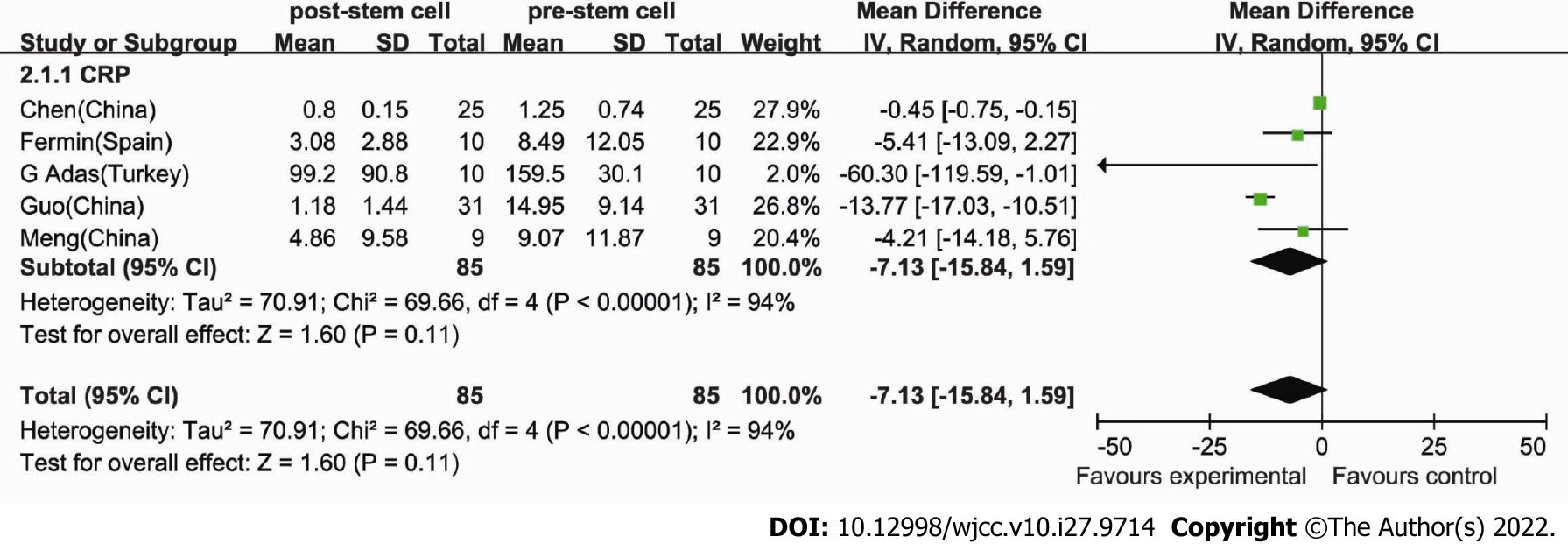Copyright
©The Author(s) 2022.
World J Clin Cases. Sep 26, 2022; 10(27): 9714-9726
Published online Sep 26, 2022. doi: 10.12998/wjcc.v10.i27.9714
Published online Sep 26, 2022. doi: 10.12998/wjcc.v10.i27.9714
Figure 1 PRISMA flow diagram showing the record identification, screening and study inclusion process.
MSCs: Mesenchymal stem cells.
Figure 2 Risk of bias item presented as percentages across all included using the Review Manager Version 5.
1 tool.
Figure 3 Comparison of C-reactive protein.
The heterogeneity was 94%, and the random-effects model (Mantel-Haenszel method) was used. Each study is represented by a square, the center of which denotes the mean difference for that study. The size of the square is proportional to the information from that study. The two ends of the horizontal bars denote the 95%CI. The black diamond gives the combined results of all studies.
Figure 4 Comparison of D-dimer.
The heterogeneity was 71%, and the random-effects meta-analysis model (Mantel-Haenszel method) was used.
Figure 5 Forest plot for interleukin 6.
The heterogeneity was 95% in this analysis, and the random-effects meta-analysis model (Mantel-Haenszel method) was used.
Figure 6 Forest plot for overall survival.
The I2 was 0%, and the fixed-effects model (Mantel-Haenszel method) was used in this analysis. Each trial is represented by a square, the center of which gives the odds ratios (OR) for that trial. The size of the square is proportional to the amount of information in that trial. The ends of the horizontal bars denote the 95%CI. The black diamond gives the overall OR for the combined results of all trials.
- Citation: Cao JX, You J, Wu LH, Luo K, Wang ZX. Clinical efficacy analysis of mesenchymal stem cell therapy in patients with COVID-19: A systematic review. World J Clin Cases 2022; 10(27): 9714-9726
- URL: https://www.wjgnet.com/2307-8960/full/v10/i27/9714.htm
- DOI: https://dx.doi.org/10.12998/wjcc.v10.i27.9714














